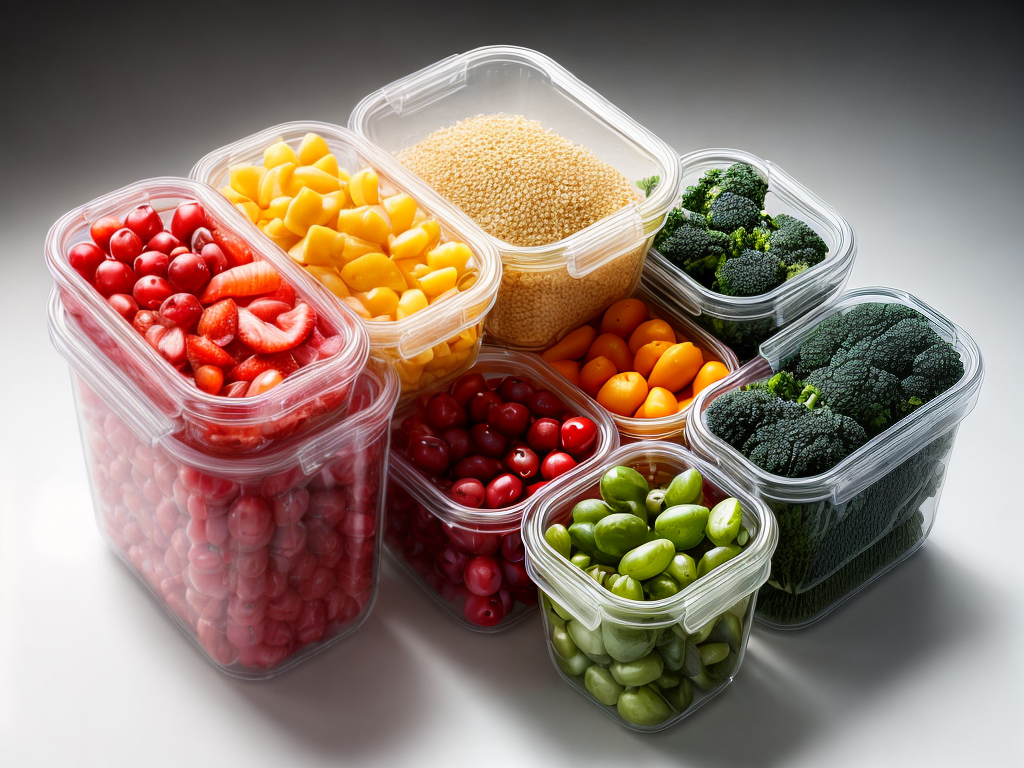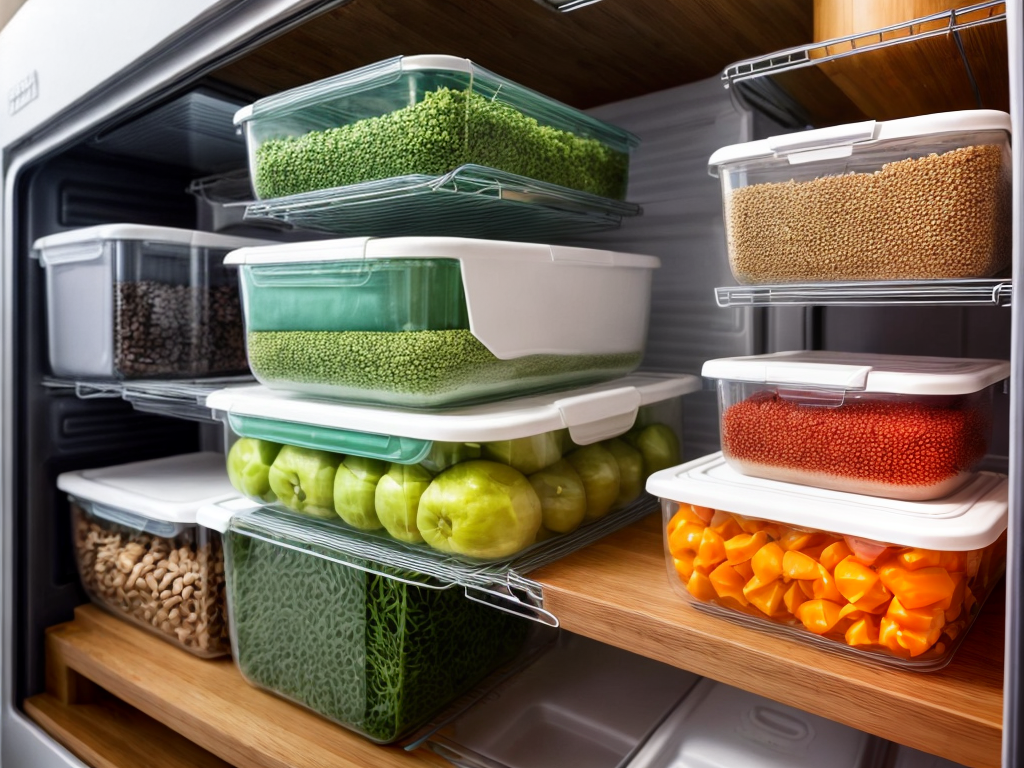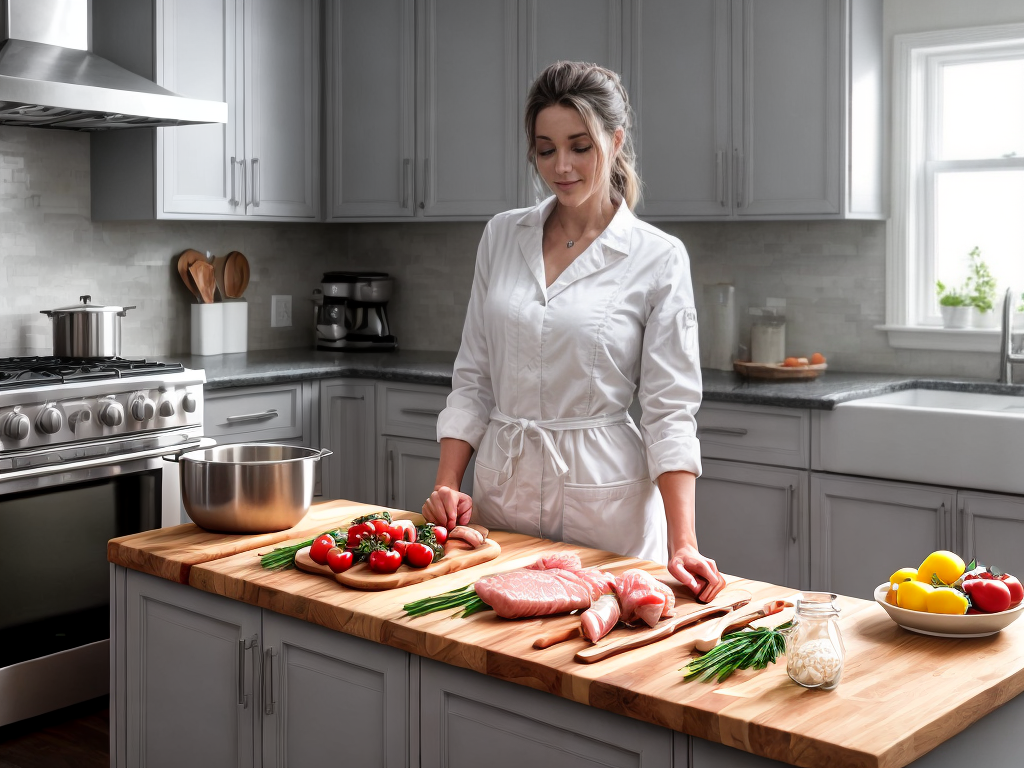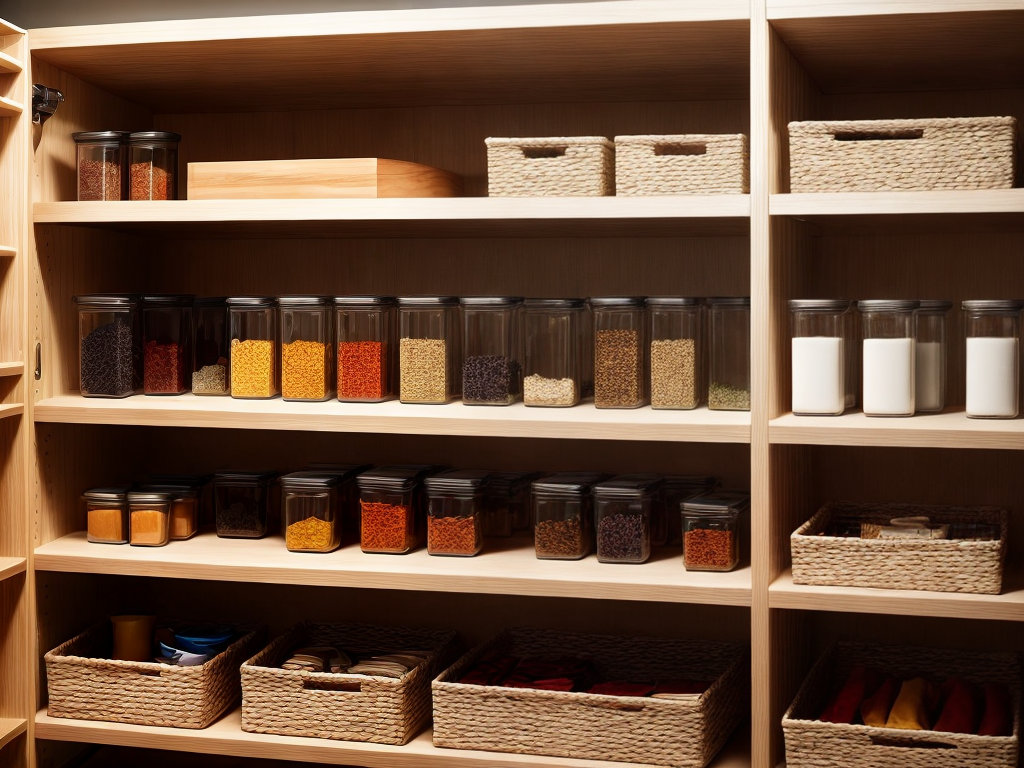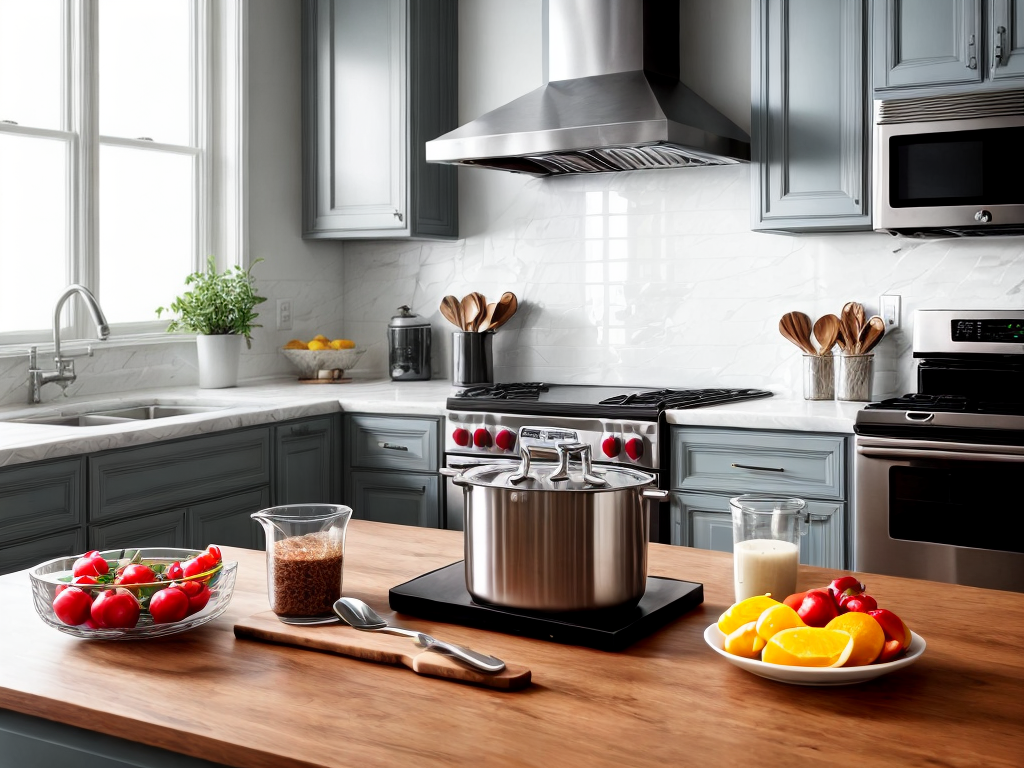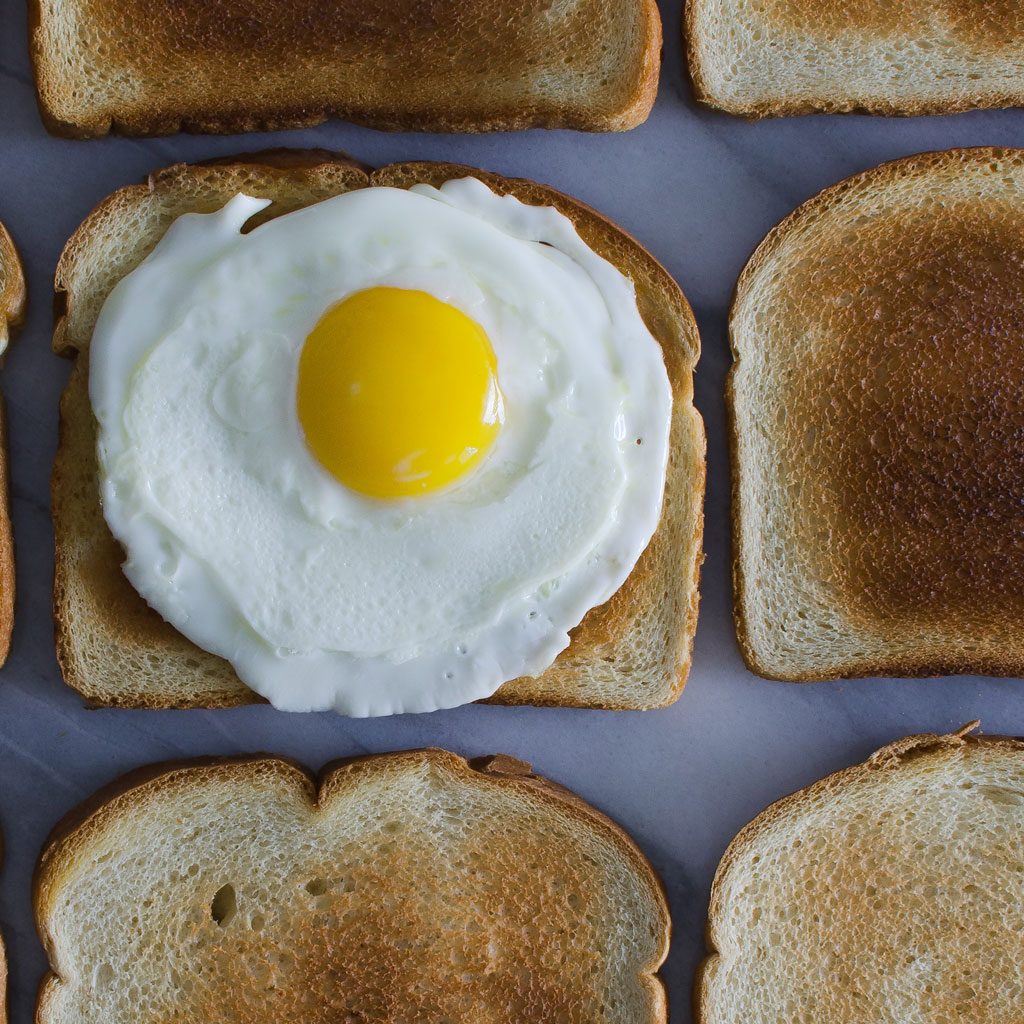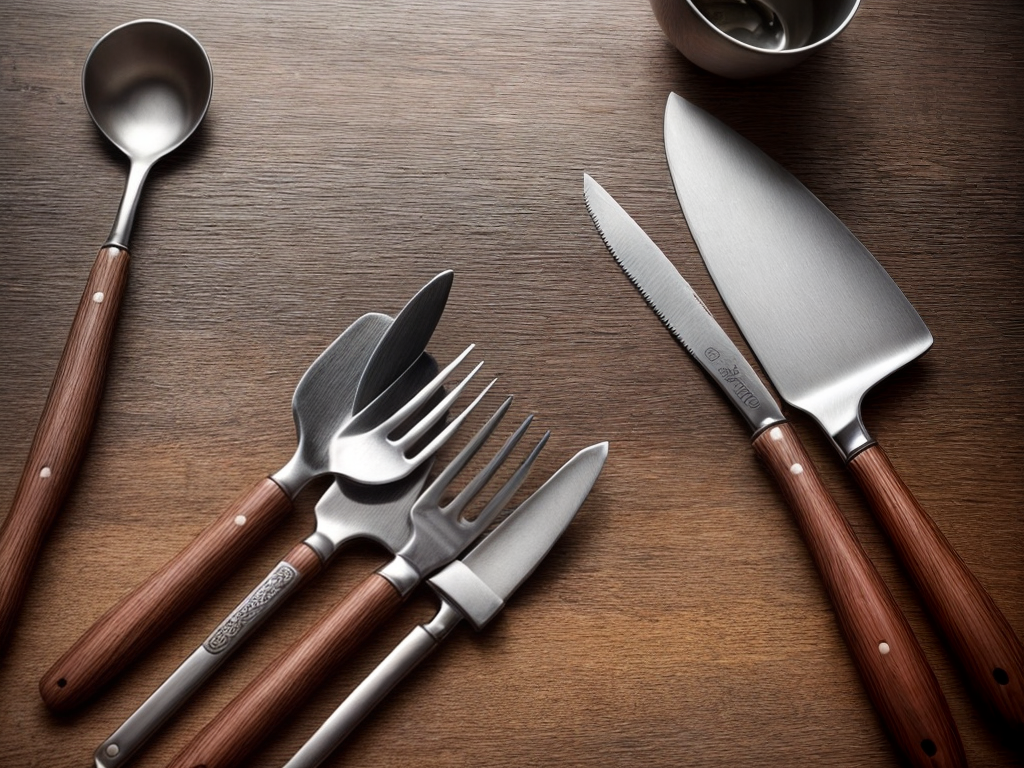
As I stood in my kitchen, frustrated by yet another broken spatula, I realized it was time to invest in high-quality, durable kitchen utensils. But where to start? With countless options on the market, it can be overwhelming to find the perfect utensils that will withstand the test of time. That’s why I’ve compiled this guide, packed with practical tips and expert advice, to help you navigate the world of kitchen utensils and make informed choices. From choosing the right materials to assessing ergonomic design, we’ll cover all the essential factors to consider. So, let’s get started on your journey to a well-equipped kitchen that will stand up to any culinary challenge.
Material Matters: Choosing the Right Metals
When it comes to buying high-quality kitchen utensils, it is crucial to consider the material used, as it plays a significant role in their durability and performance. Two popular options for kitchen utensils are stainless steel and copper. Both metals have their pros and cons, so let’s dive in.
Stainless steel is a common choice for kitchen utensils due to its durability and resistance to rust and corrosion. It is easy to clean and maintain, making it a practical option for everyday use. Stainless steel utensils also have a sleek and modern look, adding a touch of elegance to your kitchen. However, one downside to stainless steel is that it may not distribute heat as evenly as other materials.
On the other hand, copper utensils offer excellent heat conductivity, allowing for precise cooking temperature control. They are also aesthetically pleasing, with their warm and vibrant appearance. However, copper utensils require regular polishing to maintain their luster, and they can be more expensive compared to stainless steel.
Handle With Care: Evaluating Handle Construction
When it comes to evaluating handle construction in kitchen utensils, two important factors to consider are the handle material options and the ergonomic design. The handle material can greatly affect the durability and comfort of the utensil, with options ranging from stainless steel to heat-resistant plastics. Additionally, the ergonomic design of the handle should be evaluated to ensure a comfortable grip and ease of use during cooking tasks.
Handle Material Options
One important aspect to consider when evaluating handle construction for kitchen utensils is the choice of handle material. The material used for the handle can greatly impact the handle grip and handle comfort, which are crucial factors in determining the overall usability of the utensil. There are various handle material options available in the market, each with its own advantages and disadvantages. Common handle materials include wood, plastic, stainless steel, and silicone. Wood handles offer a traditional and aesthetically pleasing look, but may require extra care and maintenance. Plastic handles are lightweight and durable, but may not provide the same grip as other materials. Stainless steel handles are sturdy and easy to clean, but they can become hot during use. Silicone handles provide a comfortable grip and excellent heat resistance, making them ideal for high-temperature cooking. When choosing a handle material, it is important to consider your personal preferences and the specific needs of your kitchen.
Ergonomic Design Factors
Considering ergonomic design factors is essential when evaluating handle construction for kitchen utensils. The handle of a kitchen utensil plays a crucial role in providing a comfortable and secure grip, ensuring ease of use and reducing fatigue during cooking tasks. Here are four important factors to consider when assessing the ergonomic grip and comfort of kitchen utensil handles:
-
Shape: Look for handles that have a contoured shape that fits comfortably in your hand, providing a natural grip and reducing strain.
-
Size: Opt for handles that are neither too small nor too large for your hand. The handle should allow for a firm grasp without causing discomfort or slipping.
-
Material: Consider handles made from materials that offer a non-slip grip, such as rubber or silicone. These materials provide added stability and prevent accidents in the kitchen.
-
Weight: Choose handles that are lightweight but sturdy. Heavy handles can cause fatigue, while lightweight handles offer better control and maneuverability.
The Heat Is On: Heat Resistance and Kitchen Safety
Ensuring kitchen safety and protecting against heat-related accidents is of utmost importance when selecting high-quality kitchen utensils. Heat resistance is a crucial factor to consider, as it determines the utensils’ ability to withstand high temperatures without warping or melting. Investing in heat-resistant utensils not only prevents accidents but also ensures durability and longevity.
When evaluating the heat resistance of kitchen utensils, look for materials like silicone, stainless steel, or heat-resistant plastic. These materials can withstand high temperatures without compromising their integrity. Silicone, in particular, is known for its excellent heat resistance and flexibility, making it a popular choice for kitchen utensils like spatulas and tongs.
Additionally, it is essential to consider the safety features that the utensils offer. Look for utensils with heat-resistant handles, as they prevent burns and allow for a secure grip. Handles made from materials like silicone or rubber are particularly effective in providing heat resistance and comfort.
Functionality First: Assessing Ergonomic Design
To assess the ergonomic design of kitchen utensils, it is important to prioritize functionality. When evaluating comfort and ergonomic benefits, here are four key factors to consider:
-
Grip: A well-designed utensil should have an ergonomic handle that allows for a comfortable and secure grip. Look for handles that are contoured, textured, or have rubberized grips to prevent slipping and provide better control.
-
Weight: Consider the weight of the utensil. It should feel balanced and not too heavy or too light. A balanced weight distribution ensures ease of use and prevents strain on your wrist and arm muscles during prolonged use.
-
Angles and Shapes: Look for utensils with ergonomic angles and shapes that promote natural and comfortable movements. For example, a spatula with a slightly curved handle or a knife with a well-designed blade angle can make a big difference in reducing fatigue and increasing efficiency.
-
Accessibility: Consider how easily the utensil can be accessed and used. Utensils with longer handles or extended reach can be more comfortable for those with limited mobility or for tasks that require reaching into deep pots or pans.
Longevity Check: Durability and Maintenance
Durability and maintenance are crucial factors to consider when evaluating the longevity of kitchen utensils. To ensure that your utensils stand the test of time, it is important to invest in high-quality materials and implement proper maintenance practices.
Durability testing is a key aspect of determining the longevity of kitchen utensils. Manufacturers subject their products to rigorous tests to evaluate their strength and resistance to wear and tear. Look for utensils that have undergone durability testing to ensure that they can withstand the demands of daily use in your kitchen.
In addition to durability, proper maintenance is essential for the longevity of your kitchen utensils. Here are some maintenance tips to keep in mind:
- Clean utensils promptly after use to prevent the buildup of food particles and stains.
- Avoid using abrasive cleaners or scrubbers that can damage the surface of your utensils.
- Store utensils in a dry and well-ventilated area to prevent moisture buildup and potential rusting.
- Regularly inspect your utensils for any signs of damage or wear and replace them as needed.
- Follow the manufacturer’s instructions for care and maintenance to ensure optimal performance and longevity.
By considering durability and implementing proper maintenance practices, you can ensure that your kitchen utensils will remain in excellent condition for years to come.
| Durability Testing | Maintenance Tips |
|---|---|
| Rigorous tests | Clean promptly after use |
| Strength and resistance | Avoid abrasive cleaners |
| Withstand wear and tear | Store in a dry area |
| Regularly inspect | |
| Follow manufacturer’s instructions |
Budget-Friendly Finds: Balancing Quality and Affordability
When shopping for kitchen utensils on a budget, finding the perfect balance between quality and affordability is essential. It’s important to invest in items that will stand the test of time without breaking the bank. Here are some budget-friendly options and cost-effective choices to consider:
-
Stainless steel utensils: Stainless steel utensils are durable, easy to clean, and resistant to rust and stains. Look for sets that include a variety of essential tools such as spatulas, ladles, and tongs.
-
Silicone utensils: Silicone utensils are heat-resistant, non-stick, and gentle on cookware. They are also dishwasher safe and come in vibrant colors. Look for sets that include a variety of sizes and shapes to meet your cooking needs.
-
Bamboo utensils: Bamboo utensils are eco-friendly, lightweight, and have natural antimicrobial properties. They are gentle on cookware and won’t scratch non-stick surfaces. Look for sets that are made from sustainable bamboo and include essential tools like spoons, turners, and whisks.
-
Nylon utensils: Nylon utensils are affordable, heat-resistant, and won’t scratch non-stick surfaces. They are also dishwasher safe and come in a variety of shapes and sizes. Look for sets that include essential tools like slotted spoons, spatulas, and pasta forks.
Conclusion
In conclusion, when it comes to buying high-quality and durable kitchen utensils, it is important to consider the material, handle construction, heat resistance, ergonomic design, and longevity. By carefully evaluating these factors, you can ensure that your utensils will last for a long time and provide you with efficient and safe cooking experiences. Remember to also balance quality with affordability to find the best options that suit your budget. Happy cooking!

